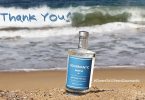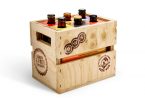On Saturday 15 May 2010, we attended a Saké tasting on the premises of the Ultimo Wine Centre. With 14 varieties on offer, the opportunity to sample the range from Japan and learn about the methods of production was too good to miss.

Long before we visited Japan, we had easily taken to the enjoyment of drinking Saké, warm or chilled, depending on the variety or the occasion. The tasting gave us a crash course into the different types of Saké and an opportunity to ask questions and take notes.

Saké is made of from Saké rice, pure water, hand-made koji (steamed rice with koji mould spores) and special yeasts. The quality of the Saké is largely dependent on the amount of milling of the premium rice. The more milling the rice grains undergo, the purer the end result will be as this allows less impurities into the final product and more of the starch in the grain that causes fermentation.

Junmai Saké is the most basic. With a minimum of 30% of rice grain milled away and an alcohol content of 15% to 16%, the flavour is often mild and average.
Junmai Ginjo Saké has at least 40% of the rice milled away and results in a complex and sometimes more fruity Saké.
Junmai Daiginjo Saké is considered to be the top end of the range, with at least milling 50% of the rice grain which leaves a finer, more complex and more fragrant Saké.

Some Sakés are best served warm but they should not be brought to a temperature higher than 30 to 40 degrees Celsius as some of the alcohol begins to evaporate.

In the 007 movie, You Only Live Twice, James Bond was already educated. “I like Saké , especially when it’s served at the correct temperature, 98.4F, like this is.”

We tasted all the varieties including a dessert-style Saké with hints of peaches, shown in the photo on the left. The ones shown in bold are the ones we enjoyed the most.

1. (Name Missing)
2. Kikumasumune Taru Junmai
3. Hakutaka Kinmatsu Tokubetsu Junmai (Golden Pine)
4. Yuki No Bousha Yamahai Junmai (Cabin in the snow)
5. Niwa-No-Uguisu Tokubetsu Jumnai (The Nightingale of the Garden)
6. Nate Shuzo Koroushi Junmai (The Black Bull)
7. Taiheizan Shingetzu Junmai (Holy Moon) – made in Western side of Japan, more mature with good acid
8. (Name Missing) Blue Bottle
9. Sawanoi Daikarakuchi Jumnai (Well in the stream) – best dry variety, best served very chilled
10. Tenryou Junmai Sake
11. Ninkiichi Kuroninki Junmai Dai Ginjo (“Best Popularity”)
12. Kukusui Junmai Ginjo Sake (Chrysanthemum Water)
13. (Name Missing)
14. Yuki No Bousha Yamahai Junmai Gingo (Cabin in the snow)
Forming part of our Foodie Triangle, the Ultimo Wine Centre holds regular wine tastings as well as the Annual Champagne Tasting.
Next – Grace Wine: Japanese Wine Tasting at the Ultimo Wine Centre

The Saké collection at the Ultimo Wine Centre
Ultimo Wine Centre
Shop c21/99 Jones St
Ultimo
Sydney NSW 2007






Love Sake and have read there is also a traditional way to serve it as well. Not a big fan of cold Sake though…
Anil, before we went to Japan, I preferred warm sake. But with the right type, drinking it chilled is quite enjoyable.
In Japan, they didn’t serve it in tiny thimbles. They put a decent sized glass in a lacquered square container and pour, allowing the liquid to flow into the container. Good times were had with Sake!
[…] the Saké Tasting at the Ultimo Wine Centre, we had the opportunity to sample Grace Wines from […]
[…] is a popular event and a chance to sample and learn about lesser known marques. Last month, a Saké tasting was held with about eighteen different types of Saké on offer accompanied by experts to guide […]
[…] heats the top of the liquid. Pour hot water into a bowl and place a ceramic vessel containing the sake in it for 5 to 10 […]
[…] world class. And with summer finally gracing our shores, icy cold Ninki Ichi Kuro-ninki Junmaiginjo sake with oysters and sashimi from the Sydney Fish Market are the go on long hot days and night. […]